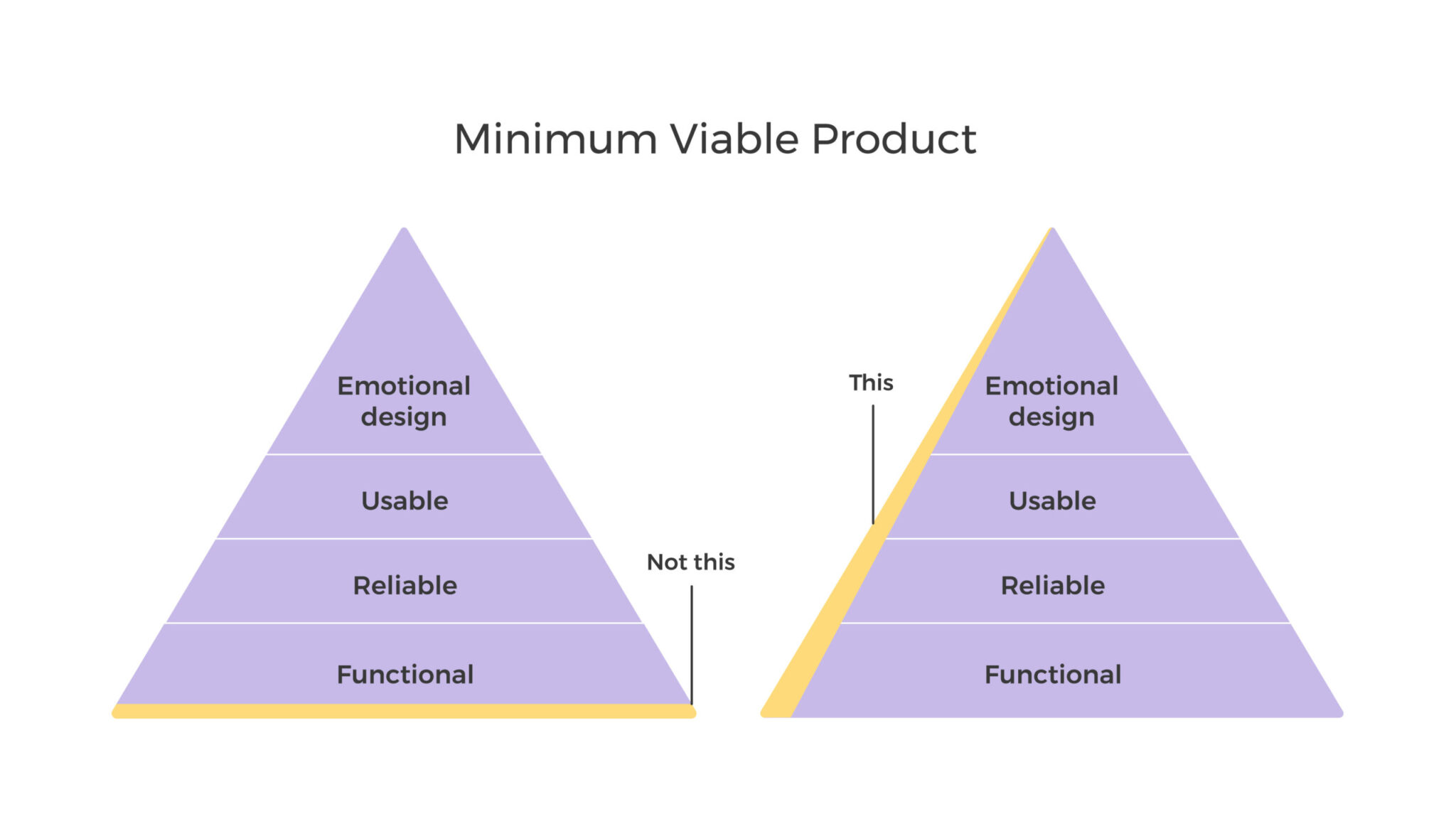The path of innovation is a complex one to tread on. Especially in an environment where conformity is usually the norm. So, when you have to convince a bunch of skeptical stakeholders of a radical concept such as a minimum viable product, things can get a whole lot slippery.
We’re sold on the idea of the MVP process (yes, it’s a process and not a product), and that it is a great way to test new ideas. This is why we’ve compiled a few pointers, in case you’re looking to gain the support of peers and higher-ups.
Clear the air regarding the MVP process

Honestly, what goes against the MVP is its very name – minimum viability does not seem to be an appealing concept to many. However, when placed in the right context, the MVP process can help build a solution that is apt to fulfill user needs.
This process follows the “build-measure-learn” sequence to validate or invalidate any assumptions about product usage and functionality with minimal resources and risks. It is an iterative method implemented to precisely identify user pain points and determine the proper functionality to address those needs over time. This is accomplished by continually testing assumptions against user feedback to make fast product changes based on data gathered. This iterative loop helps make decisions on future iterations of the product –features to add, aspects that will help increase sales/ROI, and precise budget allocation.
The MVP process involves creating a product in its most basic form, featuring those and only those functionalities that are deemed absolutely vital. It is essentially a version that allows the creative team to collect the maximum amount of validated learning about customers with the least effort.
Let’s take up a minimum viable product example to understand this better. Let’s say you’re looking to create a mobile version of the custom CRM used in your office by the sales team. Scaling it down to fit mobile screens isn’t the answer, as we all know. Neither is taking years and years to complete the project which should ideally be taking no longer than a few weeks. How is that you ask? By following the MVP process, of course!
MVP: An ideal way to test new ideas
Going with the situation mentioned above – creating a mobile app version of a custom CRM. How would it be executed via the MVP process? To understand how that happens, here’s what the MVP process is like, in the actual –

The goal to have while building an MVP is to create a product that you can test to gauge if your users are finding it useful. The aim is to test this product on users and then collate maximum information on its functionality/viability with minimal efforts. When this is established, more and more features can be added on/edited to the original to enhance its usability.
So, how would an MVP version of the CRM app look like?
This is where we enter a heavily-hypothetical territory. Let’s say that the CRM is used mostly by customer service representatives, and the mobile app is to primarily help them to respond and keep track of customer queries. It is also to help the service agents know if the technical team has resolved the issues sent to them, and respond to the customers accordingly.
Based on these needs, here’s a list of features your Minimum Viable Product app will cover –
- Employee login
- Customer ticket number
- Ticket status
- Issue being resolved by tech team
- Issue resolved by tech team
- Time taken to resolve query
With these threadbare features in place, the application can be released for testing with the users.
In the Minimum Viable Product process, the release of the product does not signify a conclusion, on the contrary, that’s the beginning of the design and development process. Once the product is released to the users, detailed and thorough feedback is collected, based on which the next set of features is released. Or, there are also instances when the entire product is scrapped with a completely new set of directives. Whatever the route is taken, valuable lessons regarding user needs and product needs are gathered, which forms the basis of informed decision-making for the business.
Measuring the progress of the MVP project

In circumstances where a full-fledged product is made, the team sets parameters to measure it in terms of success. However, in the case of an MVP, which is essentially a work in progress, the right way to assess it would be by measuring its progress.
In the case of the mobile CRM app that we’ve hypothetically created, the parameters to measure progress would probably be setting a number of customer queries resolved during a specific period, say, a month. In a global business where the customer service agents, the technical team, and the customers would be based around the world, this app would prove useful for updating the query status in real-time. This application could potentially be a vital cog in providing faster query resolution and thereby, improved customer experience.
Testing forms the bedrock of an MVP. As a part of the process, the design team identifies the riskiest assumptions, finds the best way to test that assumption, and makes use of the results to guide development. The key takeaway being starting smaller and iteratively building up to create a better, more polished product. All of which is done by leveraging the intelligence of their users to make the best product decisions. With every release version, the MVP evolves to maximize RoI and move towards being a full-fledged version.
Getting stakeholders to board the Minimum Viable Product airplane

Why the airplane and not a train or a bus, you ask? Well, it is efficient and quick, and done right can be quite affordable as well. And, mainly to convince stakeholders, there cannot be other words that could be more appropriate than efficient, quick, and affordable.
Whatever your project maybe, if you are planning to use the MVP process to launch it, consider presenting is based on the points listed below to get rid of the skepticism in your stakeholders :
- The purpose to build an MVP is to launch it quickly, using a small budget. This is done to collect user feedback for the primary product and include it in future iterations.
- The features of an MVP product aren’t selected at random. An expert team conducts thorough research to identify the most important features needed to make the product viable, and then builds it. This ensures that the product satisfies the most basic of user needs and prepares a foundation to build more. This helps in building a loyal customer base and add on to their number as well.
- Building an MVP implies striking the perfect balance between your business needs and user needs. The purpose of the MVP is to test the hypothesis by minimizing errors. In our example of the CRM mobile app, our business wanted to find a way to enable their service agents to keep track of customer queries to serve them better. The MVP version of their app, therefore, simply had the functionality to track the ticket status. Based on the usage and utility, more features were to be added to it to enhance the experience.
- The MVP process is focused, lightning-quick, and minimal which helps the company gain instant wins with tightly-measured resources. When presented to stakeholders, this kind of approach is far more likely to gain support than you’d imagine.
In the survival-of-the-fittest world of business, releasing a product quickly with minimal resources is the norm. Building an MVP as opposed to a full-fledged, heavy version ensures advantages such as –
- Releasing a basic version that’s simple for users, and solves their purpose precisely
- Is not overly complicated by being too feature-heavy and therefore needs time for users to get used to
- Heavy versions require big budgets and considerable man-hours to accomplish and despite this present very little guarantee of success
- Having created the MVP based on bare minimum viability, there is less room for error, and taking instant feedback from users means that there is far more potential for growth
Convincing stakeholders of any concept can be an arduous task. That said, the MVP process is replete with business-friendly and stakeholder-friendly attributes of being a low budget, quick, and efficient way of testing novel ideas. Try to make a push for it at your next meeting, and perhaps carry a box of cupcakes to help seal the deal.









